Taste and Travel – twin passions
Posted by tastetravel in Cooking classes, Tasmania, Tasmanian food and wine on March 3, 2015
Well it is time for a change and since I do not have time to keep this blog updated I wanted to let you know before I took the website down. What with Facebook, Instagram and another website – and its accompanying blog to maintain, my Taste Travel blog has taken a back seat for many months.
Please use the link I have provided above before March 7 as it is the date of the change of this website. It will no longer be known as tastetravel.org – however it may be accessible for some time as tastetravel.wordpress.com
But put simply, I am not renewing the shortened (org) domain name of Tastetravel nor the extra space I normally need.
Kiss A Fish was born once we moved to Tasmania permanently, that was just over a year ago and I decided to concentrate on our coastal environment and its seafood for inspiration.
If following blogs takes up too much of your time, then consider just liking my Facebook page as it is the most instant and informal way of staying in touch.
Thank you for your interest over the years and I trust you will understand my need to make a change in the way I communicate. My best wishes to you all Roz
Clarendon House still presides
Posted by tastetravel in architecture, Australia, Tasmania on April 21, 2014
 The well-known Michelin food guide tells you if a restaurant is worth a stop or whether more seriously it is considered to be in the category of ‘deserving of a detour’ and if you appreciate Australia’s history then Clarendon House in northern Tasmania is definitely worth a detour. This is a fine example of Georgian Italianate design from Australian architect, artist and author William Hardy Wilson who was considered one of the best 20th century architects. Wilson – born 1881 and died December 1955. The mansion is set in 7 hectares on the banks of the South Esk River. Clarendon was the centre of a large enterprise developed by James Cox. The Australian Dictionary of Biographies can be visited here for more information about Cox’s holdings and influence in Tasmania’s pastoral history.
The well-known Michelin food guide tells you if a restaurant is worth a stop or whether more seriously it is considered to be in the category of ‘deserving of a detour’ and if you appreciate Australia’s history then Clarendon House in northern Tasmania is definitely worth a detour. This is a fine example of Georgian Italianate design from Australian architect, artist and author William Hardy Wilson who was considered one of the best 20th century architects. Wilson – born 1881 and died December 1955. The mansion is set in 7 hectares on the banks of the South Esk River. Clarendon was the centre of a large enterprise developed by James Cox. The Australian Dictionary of Biographies can be visited here for more information about Cox’s holdings and influence in Tasmania’s pastoral history.
The wonderful three legged round table in the impressive wide hall of Australian fauna was painted by Tasmanian based artist Michael McWilliams a former Glover Art Prize winner and People’s Choice for Glover in 2014. Not only did I love this table but another favourite was the metal sculpture of a dog sitting on the sofa in the study, it frightened the daylights out of me as I walked in to the room.












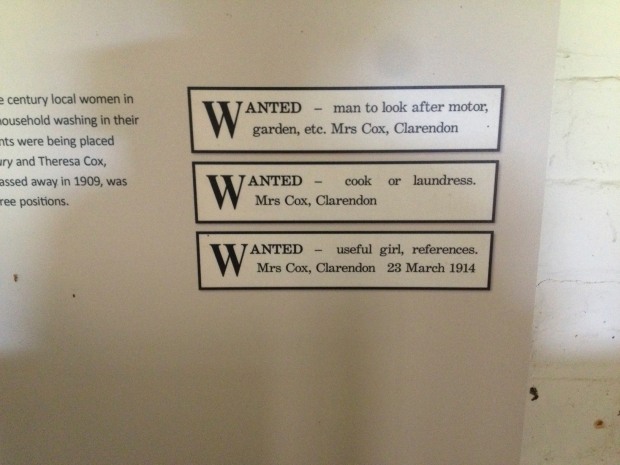
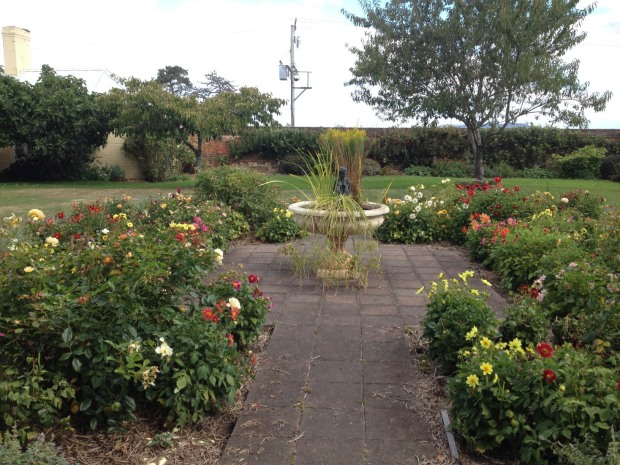
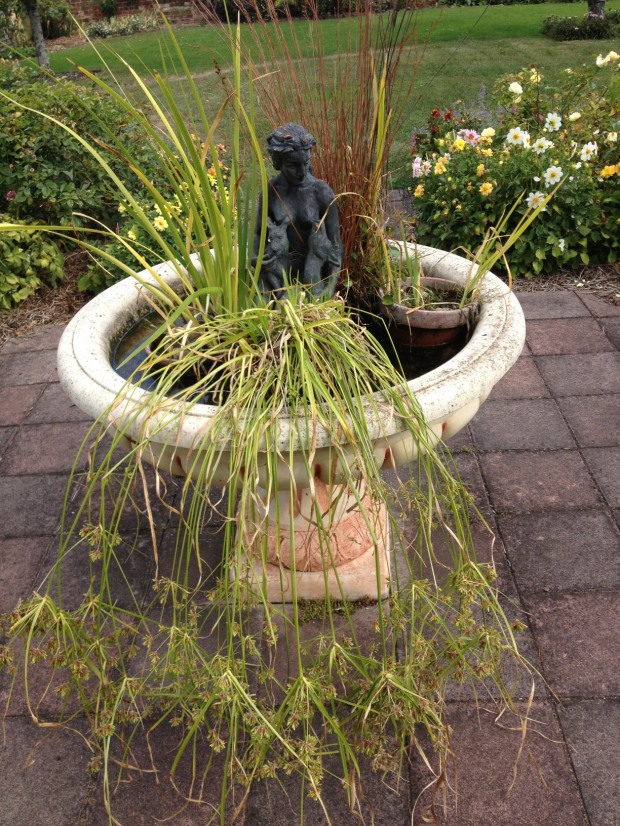



We were introduced to the house with a brief talk and then left to our own devices which suited us so we could take in the details of each room without being rushed. I have added a photo of the rear of the house, it is the view minus the ionic columns with trees obscuring the entrance. It was originally intended to be the front of the house. The gardens are being well maintained and as always the house and its outbuildings are in constant state of repair. Based on this beautiful example we decided to join the National Trust so expect more posts as we work our way around Tasmania’s historic properties.
A special garden at Mole Creek
Posted by tastetravel in Uncategorized on April 14, 2014
An open day at a garden called Wychwood saw us driving a very long way in one day but it was worth it. We received an alert to the event from the Magnus family who own Woodbridge Fruit Trees.
The entrance to the garden was lined with silver birches and beneath dotted with toadstills, the type I have only seen illustrated in fairy tales. The red spotted toadstills Amanita muscaria looked so perfect that at first I really thought they were fake.
Wychwood is also a nursery and people were queuing up to buy plants. Nic Magnus was handing out samples of heritage apples and pears. The Elgaar cheese people sold their cheddar, yoghurt and haloumi and someone sold apple cider but an opportunity existed to sel apple pies, apple butter or other apple somethings….
 We spotted an espaliered ‘Catshead’ apple framing the vegetable garden. There was an abundance of apples the size of quinces.
We spotted an espaliered ‘Catshead’ apple framing the vegetable garden. There was an abundance of apples the size of quinces.
Various sculptures were strategically placed through the garden, although one sculpture of a pear on a plinth was unexpectedly placed near the wood pile opposite the chicken pen. Along with sculptures, hedging here is an art form and planting was designed to lure you from one outdoor room to the next. We did walk down to Mole Creek at the perimeter of the property to see if we could spot the trout or the platypus said to live there but of course with all the chatter nearby a platypus was wise to be was nowhere close on that day.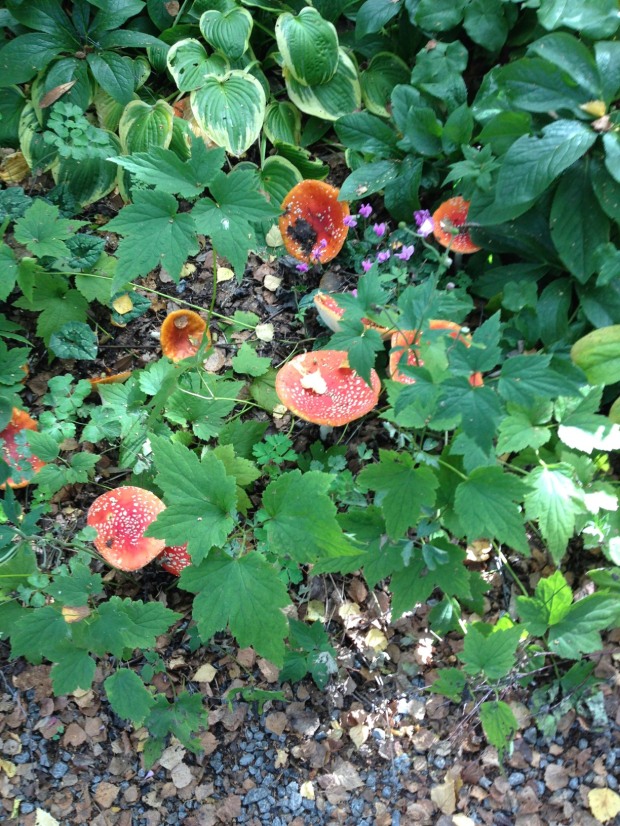
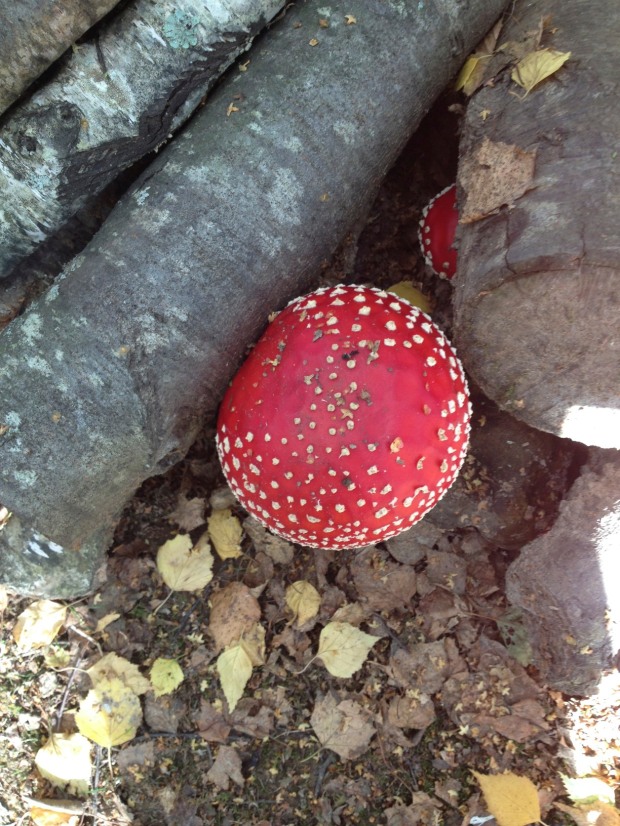





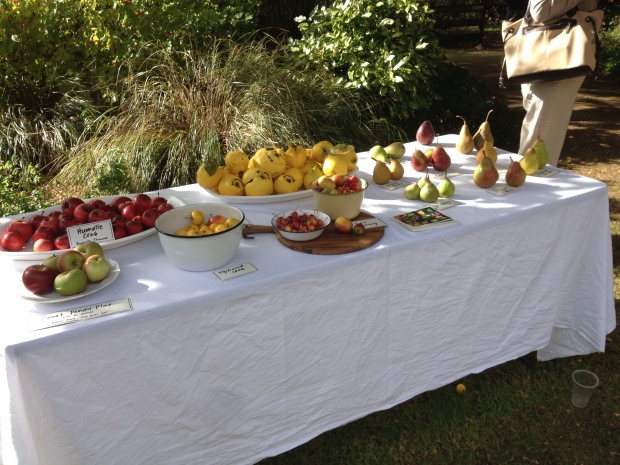

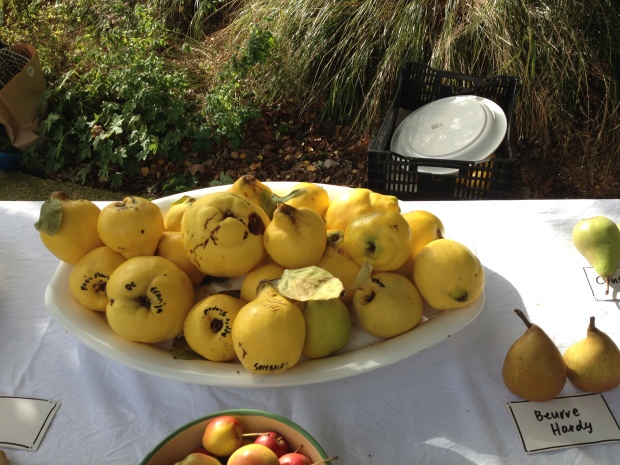

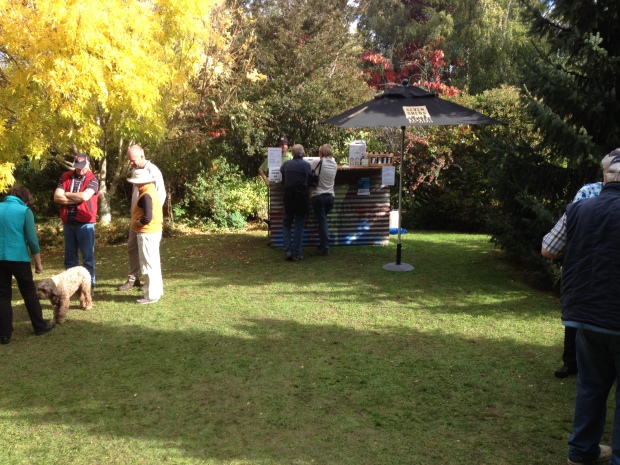




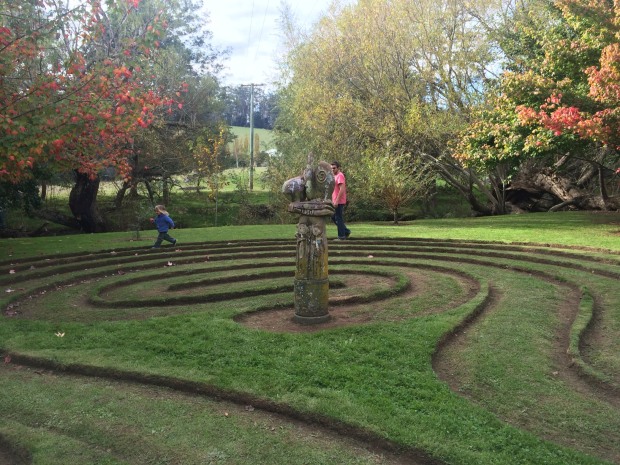








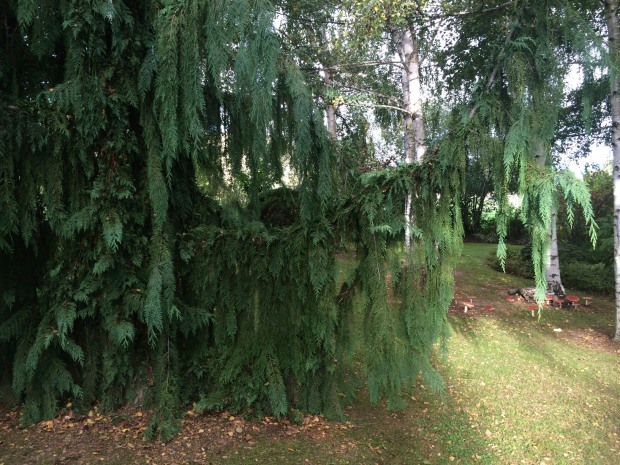



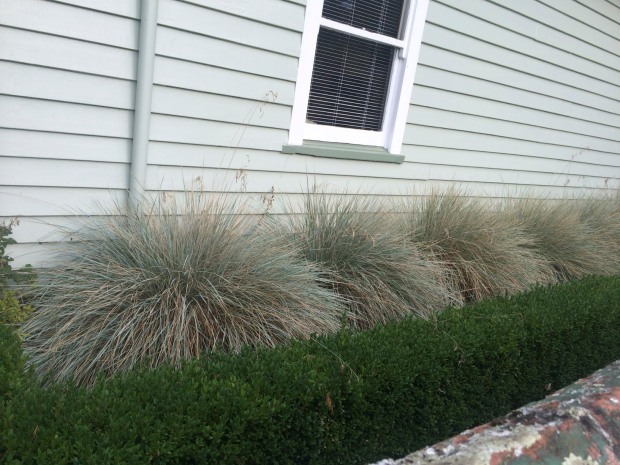


Back at home I reached for the Rosehips & Crabapples book by Susan Irvine that my friend Barbara Heath left with me and found that Irvine had lived nearby and visited the garden from time to time to buy plants.
The magnificent property is for sale but the unprepossessing house may be letting the sale down as it seems to have been on the market for some time. And not to be underestimated is the whole legacy of keeping such a garden to the standard the owners have achieved.
Our major life change is a sea change
Posted by tastetravel in Australia, Tasmania on January 31, 2014
 I may appear to have dropped off the planet with the huge time gap since my last post, but I have literally dropped to almost the bottom of the planet by moving to Tasmania.
I may appear to have dropped off the planet with the huge time gap since my last post, but I have literally dropped to almost the bottom of the planet by moving to Tasmania.

There has been so much to organise to move a large houseful of belongings and a collection of art and books amassed over many years. The worry of whether it would all arrive and intact with a long journey including a sea crossing has kept me away from the blog. And to spare you I did not want to record the tedium of such matters.
At least we were moving to a house we have owned for some time and know that we are already welcome, as we have had four years visiting Tasmania on holiday and have made some very good friends.
So the move and trade is from living in an inland large city to a life at a small coastal hamlet; a big change in weather patterns from Queensland’s tropical heat to the temperate climate of North Eastern Tasmania and then there is the rather sad fact that our new adopted state is the poor relation of all the mainland states.
For our future life here in Binalong Bay, we are engrossed in making ourselves comfortable for a life that for the most be spent in a small radius with interstate or overseas travel for the occasional change of scenery. And so we have embarked on a plan to add a sun room and deck onto our house and the design details have consumed us along with trying to work out where to put all our belongings. I have joined a local Buy Swap Sell group on Facebook and gradually some of our excess is finding its way into other houses in the area. In fact it is becoming quite cathartic and helps in the process of feeling we are making an unencumbered new beginning. I thought I had a good go at selling off or giving away things in Brisbane before I left but it seems on unpacking crates that it was a piffling attempt. Along with the additions we are adding bookshelves for the hundreds of boxes of book we have in a storage shed. Some days when walking on the beach, a wave of guilt passes over me as a reminder that I haven’t opened a box lately and tried to find it a home. But back to the Buy Sell Swap group – what a good idea that is, and now I am discovering there are many more groups set up on the Facebook community around Australia.
This year was the first time that our multi-graft of greengage plum and apricot (Purple Gage and Apricot Moorpark) beared any fruit. Oddly the plums were prolific but just two apricots was hard to understand. I am learning to be patient as I wait for our Burre Bosc pears to mature along with the handful of quinces that I hope survive the birds. The cherry tree yielded two cherries, next year will be a bumper!
Here are some photos taken since I arrived in early December just to show you how much I love our new environment. I have also been around the neighbourhood photographing wood stacks, I love this oh so neat one.

Brisbane couple who also own another house in Tasmania the Heath Enright Trust join us for a walk to Skeleton Bay
I have a new venture to announce soon so please be patient and watch this space. I will create a new website and blog so it is likely this blog will be incorporated into the new one. Roz
Cooking with cast iron
Posted by tastetravel in Kitchen on September 7, 2013
In some of my travels and snooping around ancient kitchens in castles, châteaux, palaces, palazzi and any other magnificent abodes where I am allowed to visit the kitchen, I check out at the batterie de cuisine and high on the survival list are centuries old cast iron pots.
Recently after cooking a Beef Bourgogne in my fifteen year old red Le Creuset cocotte I was shocked to find a couple of small chips on the inside enamelled surface. It was the first time anything like this had happened and I tried to find out what went wrong.
This Le Creuset gratin dish has been in my kitchen since the 80’s. It is no wonder the French cast iron company Le Creuset offer a lifetime guarantee on their equipment – that is if you don’t treat it recklessly.
 Here it is empty so you can see it is still in fairly good condition.
Here it is empty so you can see it is still in fairly good condition. 
The black baking dish I bought even earlier, probably mid 1970’s. The brand is Danish Copco but sadly Copco has moved away from cast iron and gone into tea kettles. I discovered on Ebay, Amazon and Etsy that there is a healthy second-hand market mostly for Copco coloured cast iron cooking pots.
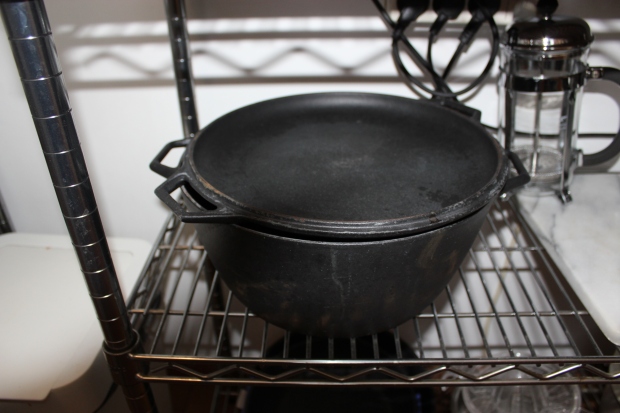 This Copco cast iron ‘Dutch Oven’ I discovered lurking on the bottom shelf in a Paris apartment that we stayed in some time ago. The lid is upside down but the style is still contemporary.
This Copco cast iron ‘Dutch Oven’ I discovered lurking on the bottom shelf in a Paris apartment that we stayed in some time ago. The lid is upside down but the style is still contemporary.
Now back to how I developed chips in my Le Creuset cocotte. I am not one hundred percent sure but I have been told that I may have filled the pot with cold water to soak after use whilst it was still hot. Or it may have suffered a shock by my turning up the heat too high whilst I was browning the meat. Whatever I did I am not sure but I am guilty of taking the pot for granted.
When I got the new big black one at the top of the page a manual came with it and so it gave me a chance to read the instructions again.
If like me you just think they will be hardy whilst you are tardy follow my extracted tips below:
- Always put something in the pot/frypan if going on the stove top, eg water or oil and fully cover the base.
- Warm it up slowly, only then can you turn up the heat.
- Once you take it out of the oven put it on a neutral temperature base, I usually put it on one of my gas top trivets as I have stainless steel benches and that would be too cold in the winter.
- You can use a high temperature if you use it to boil water for pasta, just warm it up first. High heat should never be used to pre heat a pan before lowering the temperature, I definitely own up to having done that in the past.
- Cleaning – soak with warm water if the pot is still warm
- The versatility – can be used on gas, electricity radiant electric ring, ceramic, induction and thermic ovens.
- I have always been fussy though about the implements I use, never metal, always wood or heat proof plastic to stir in the pot or serve out of the pot.
- If you have developed chips inside you can continue to use it if you keep the exposed cast iron bits oiled. I love the stainless steel knob on top of my new black cocotte and I promise I will look after it.
U tube can be helpful, if you have an old cast iron dutch oven or frypan, the type that may have looked like it spent most of its life over a camping stove or fire, then follow the lead of an American woman I saw on U tube buy an old dutch oven at a junk shop to replace the one she donated from her kitchen to her son when he left home. It had layers of black gunk and since she had a pyrolitic oven it was a cinch to clean. She acquired a fire brick to sit on the base of the oven to hold the pot and turned on the pyrolitic programme and it fully restored the oven and then she discovered that the brand was the famous one she had given to her son. A happy ending but I would not recommend it for enamelled cast iron.
My large frypan is a bit blackened around the edges but I try not to scrub it too hard for fear of scratching. The blackness has developed over many years by sending it to the oven for final roasting of quail, steaks, racks of lamb, and many other dishes including tarte tatins and souffle omelettes and frittatas. They are heavy but I love them despite arthritis in my fingers and wrist. Having a second place to hold the frypan helps.
 Another recent addition to my cast iron family is this Japanese Nambi Tekki designed by Sori Yanagi. It is multi purpose and has a matching lid that costs about the same as the base so I hesitated and have not bought the lid yet as I don’t think it need it.
Another recent addition to my cast iron family is this Japanese Nambi Tekki designed by Sori Yanagi. It is multi purpose and has a matching lid that costs about the same as the base so I hesitated and have not bought the lid yet as I don’t think it need it.

My former red cocotte lives on in my memory – I used the lid to weigh down a flour and water paste that was a seal for seven hour lamb.
I have this terrine in bright red also. Terrine making is a dying art in the average home but I still make them and I also use them for baking loaf cakes and sometimes for extra stuffing and the occasional meat loaf.
For the people who asked me about the Doufeu Cocotte I wrote about in the previous post. 
I checked and they are not available in Australia as there has not been enough interest to justify the shipments but Amazon will sell and ship them to Australia.
Goodbye red oven, you have served me well.
The cookware shop Taste in the James Street, New Farm shopping complex stock the largest variety of Le Creuset shapes and colours in Brisbane.
I have no affiliation with Le Creuset, Copco or any other brand of cast iron or the Taste shop.
More cooking classes in Paris
Posted by tastetravel in Cooking classes, France Travel & Food, Kitchen on July 31, 2013
 This year I returned to Paris again and headed straight back to my friend Paule’s cooking school. Even though I ran a cookery school myself for several years in Brisbane I still find attending another cook’s classes stimulating and there is always something new to learn. Every time I have gone to Paule’s school I discover not only new recipes but entirely new techniques.
This year I returned to Paris again and headed straight back to my friend Paule’s cooking school. Even though I ran a cookery school myself for several years in Brisbane I still find attending another cook’s classes stimulating and there is always something new to learn. Every time I have gone to Paule’s school I discover not only new recipes but entirely new techniques.
The class started off with an escorted tour to the food shopping district close to the former Le Halles market. Paule’s business name is not named Promenades Gourmandes for nothing. Paule was one of the very first people to organise walks and shopping trips to the best food arrondissements of Paris.
The famous family pie crust. A very different technique of making pastry that I have documented in earlier posts. If you want to know more about a different and easier way of making pastry do look up her website, or better still put in a request if you are going to Paris.
The starter menu for today was goats cheese and shallot tart but of course the French would have a better name Quiche au Chèvre et Échalottes Confites.
 One of the students did not eat goats cheese so we made a lop-sided tart, that is one with the rounds of goats cheese to one side only.
One of the students did not eat goats cheese so we made a lop-sided tart, that is one with the rounds of goats cheese to one side only.
 Some patience required for the slow cooking of shallots for the quiche and ratatouille.
Some patience required for the slow cooking of shallots for the quiche and ratatouille.
The fabulous Lacanche stove.
The Le Creuset cocotte is an indispensable piece of equipment in Paule’s kitchen.
You don’t see the range in various sizes so often in Australian kitchen shops but you would easily be able to order one at a cook’s shop. I took these photos in Paris’s Galerie Lafayette where they offer cocottes in several sizes.

The ice on top of the cocotte of ratatouille before it goes into oven – Paule left of picture in stripes.
At the end just before serving the ratatouille in goes a little crème fraîche, a little something extra that most cookbooks don’t include.
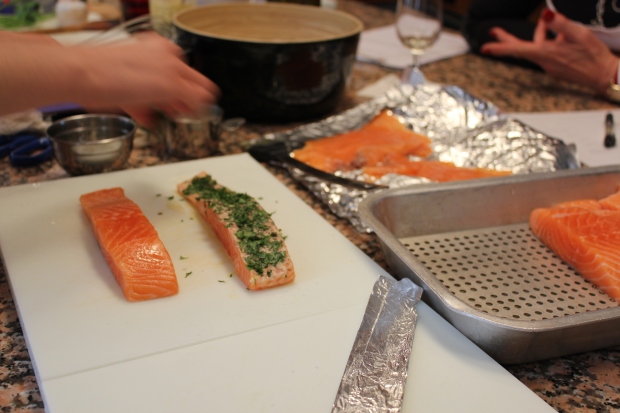 The Tournedos de Saumon – fillets of salmon were coated in herbs and wrapped in slices of smoked salmon. The foil held the shape whilst it was being cooked. I was quite impressed by this dish and re-created when we went down to our rented farm-house in Provence.
The Tournedos de Saumon – fillets of salmon were coated in herbs and wrapped in slices of smoked salmon. The foil held the shape whilst it was being cooked. I was quite impressed by this dish and re-created when we went down to our rented farm-house in Provence.
Salmon ready to be lightly cooked on both sides before being finished in the oven.
The salmon cooked and ready to serve. Love the wild patterned plate.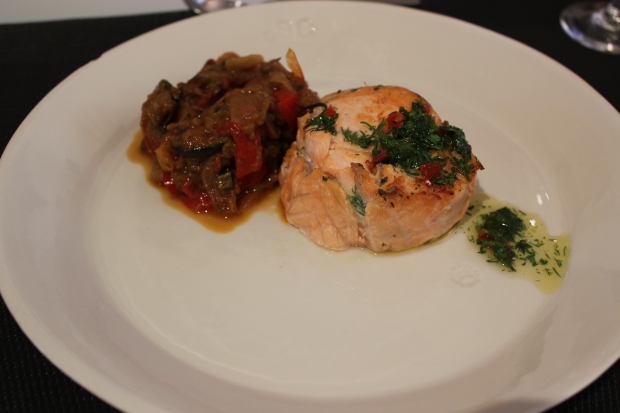
Sauce Vierge to go with the salmon. This was a reminder for me to make this sauce more often, it goes so well with fish and pasta.
Paule serves the most stunning best cheese always. On the board are Crottin de Chavignol, Saint-Marcellin, Brie, Saint-Nectaire and Comté. This year I learned that the crunchy taste in hard cheese are the fats in the milk that crystallise. Another tip this one is alarming for those that think it is the soft cheeses that are highest in fat, it is in fact the harder cheese that has more fat. You will also learn as we did the ideal wine to drink with cheeses.
Flourless chocolate souffle with the arty name of Léger Moelleux au Chocolat.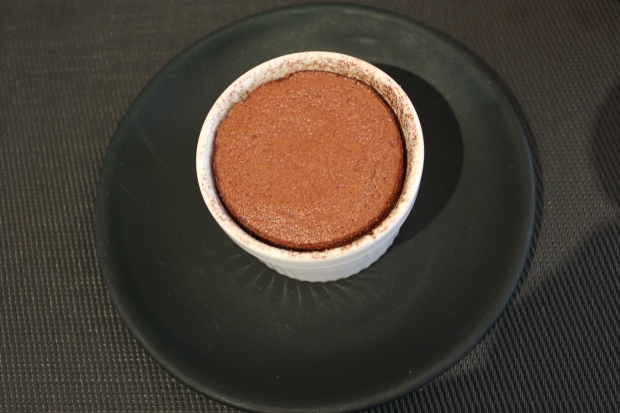
I did not get a photo of the higher inflated version as it came out of the oven. It had settled whilst we ate the other courses.
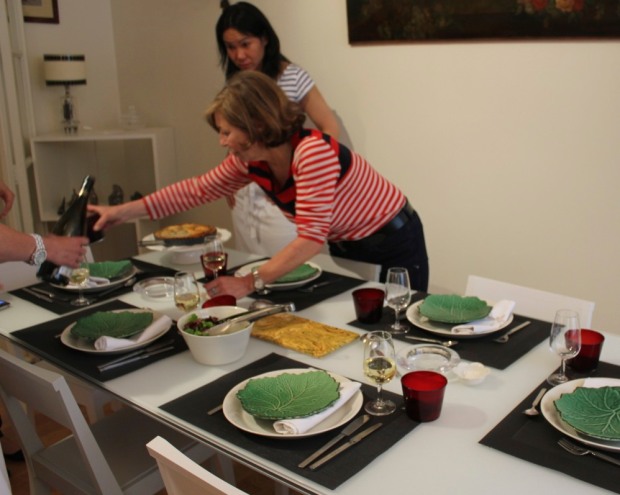 Paule always lays a beautiful table.
Paule always lays a beautiful table.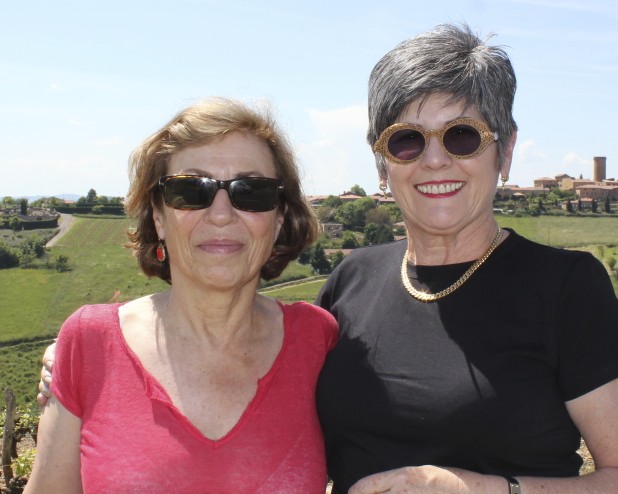
Here’s a pic of us on a wine tour in Beaujolais. I cannot wait to return to France and return to Paule’s kitchen.
Volta restaurant, Ghent, Belgium
Posted by tastetravel in Belgium, Dining on July 24, 2013
 We had no friends in this city so our new Belgian friend became the internet otherwise we would never have found Volta by walking around the city. It turned out that it was not that far out but located in a street tourists have little reason to frequent. Volta occupies an old building that was once just as useful as an electrical transformer station.
We had no friends in this city so our new Belgian friend became the internet otherwise we would never have found Volta by walking around the city. It turned out that it was not that far out but located in a street tourists have little reason to frequent. Volta occupies an old building that was once just as useful as an electrical transformer station.
We had been in Ghent for a week with our pals from Switzerland who had flown in to rendezvous (we meet up regularly somewhere in the world) and we wanted to eat at Volta as our final dinner together but it is very popular and we could not get in at night with short notice I am not called resourceful for nothing, I grabbed a lunch date.
When we arrived it seemed we had been allocated a high communal table with stools which just was not what we wanted after several hours of walking around the city. We needed to sit back on a chair and relax over our meal. I had a quick persuasive word with the head waiter and he gave us a table we think was intended for a group of businessmen who were sitting in the garden having a drink. 
We were impressed with the large open kitchen where there was no drama to be witnessed, just cool and calm chefs going about their business. A glass wall kept out any smoke, odours or aromas, however diners were encouraged to go beyond the glass if they wished.
We chose the set lunch menu at an amazingly reasonable € 25.00. It turned out to be even more value on offer when four separate entrees arrived.
Sugar snaps, beans, perfect poached eggs, followed by a crostini with a chicken mayonnaise emulsion topped with curried corn, then another salad of carrots, black olives and herbs.
 Then a smoky halved aubergine for each person came with a dressing of ‘chuca’ a Japanese soy based sauce.
Then a smoky halved aubergine for each person came with a dressing of ‘chuca’ a Japanese soy based sauce.
The main course comprised of a mixed grill interspersed with vegetables and salad garnish.
An array of wines by the glass were available by way of one of those refrigerated cabinets with various bottles and dispensers to keep the wine from oxidising.
After 10.30 a bar upstairs opens at Volta and for late night revellers there is a handy machine on the way to check your alcohol content.
If you plan to visit Ghent be sure to look up the website, you can book Volta online and in advance as it is the happening place for hipsters and foodies.
Dining in de Vitrine, Ghent Belgium
Posted by tastetravel in Belgium, Dining on July 17, 2013
I love the name of this restaurant, de Vitrine, a glass cabinet to display your collection of whatever you collect. It evokes for me Edmund de Waal’s memoir The Hare with Amber Eyes. de Waal is the English ceramic artist who wrote a best-selling memoir that centres around a valuable collection of Japanese netsuke that survived enemy occupation of the family home in the second world war and finally bequeathed to him by an uncle.
This small restaurant in Ghent is the city presence of Kobe Desramault’s restaurant in the country town of Dranouter between Ghent and the north coast of Belgium. In De Wulf is now on my list of restaurants to visit next trip to Europe. Desramault is the youngest Belgian chef ever to be awarded a Michelin Star and in my experience one star is the best star of all, chef is always striving and the cost is never likely to be outrageously expensive.
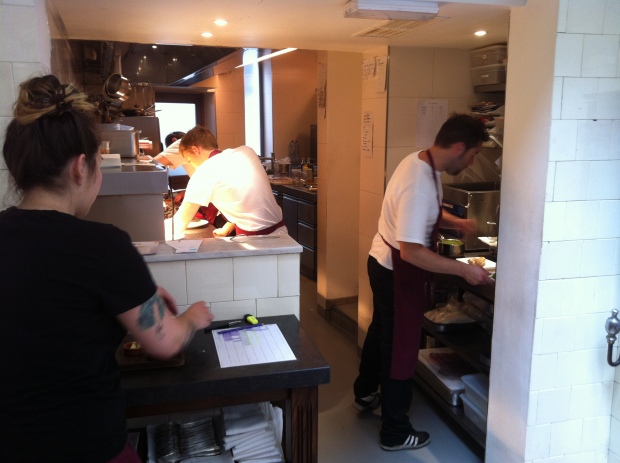 But back to de Vitrine, set in an old butcher shop in an area described to us by locals when trying to find it as ‘dodgy’. So when we arrived early for lunch we took a walk around the area and found the ‘dodgy’ description means lovely underwear clad ladies standing or sitting in windows and doorways, so reminiscent of the red light district of Amsterdam.
But back to de Vitrine, set in an old butcher shop in an area described to us by locals when trying to find it as ‘dodgy’. So when we arrived early for lunch we took a walk around the area and found the ‘dodgy’ description means lovely underwear clad ladies standing or sitting in windows and doorways, so reminiscent of the red light district of Amsterdam.
Out of the small kitchen came our first starter of smoked cod, kohlrabi and tarragon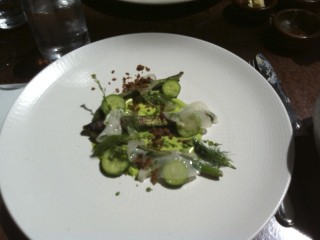
followed by grilled courgette cucumber, dill and bacon.
Juicy lamb shoulder with asparagus and goats cheese cream.
A sensational combination to end our meal of white chocolate and yoghourt, purslane, celery granita. Under the yoghourt and white chocolate confection an egg yolk that had been frozen for 12 hours and then given the brulee torch, the garnish is toasted barley.
The egg yolk revealed.
 Coffee and chocolate ended our meal.
Coffee and chocolate ended our meal.
Good value we felt – three courses €33 or four courses €45
The bad news (for me) is I missed the event at Garagistes in Hobart where Kobe came to cook – here is a link to read more about it. Savour Tasmania
Anyone planning a trip to Ghent – you can book online http://www.de-vitrine.be.
Address: Brabantdam 134, Ghent Tel 09 336 28 08
Chocolatier becomes Alain Ducasse
Posted by tastetravel in Artisanal, Paris on July 14, 2013
 Michelin star chef Alain Ducasse not content with his Michelin stars had another life long career wish that he had not fulfilled and now he has achieved it.
Michelin star chef Alain Ducasse not content with his Michelin stars had another life long career wish that he had not fulfilled and now he has achieved it.
And not just a brand, they are making chocolate from the beginning – roasting and crushing the cacao bean, preparation that is usually performed before most chocolatiers receive their chocolate supplies to take to the tempering stage. The trend for quality chocolatiers in France and Belgium now is to produce single origin chocolate and Ducasse has launched straight into that trend.
An appealing entrance. Large enough to bring a truck through for delivery and despatch.

It is in a former factory near Bastille in Paris.
 When all the Parisian chocolatiers compete to make sure they have the most beautiful packaging and boutiques to sell their wares, he has gone for simplicity.
When all the Parisian chocolatiers compete to make sure they have the most beautiful packaging and boutiques to sell their wares, he has gone for simplicity.
Showroom antique chocolate moulds.
On the way out – cocoa bean man.
Ours was a hurried visit on the last morning of our stay in Paris, we had no time to organise a special behind the scenes tour for this blog but on his website there is a short movie showing all the behind the scenes view of the workshop. La Manufacture de chocolate – www.lechocolat-alainducasse.com












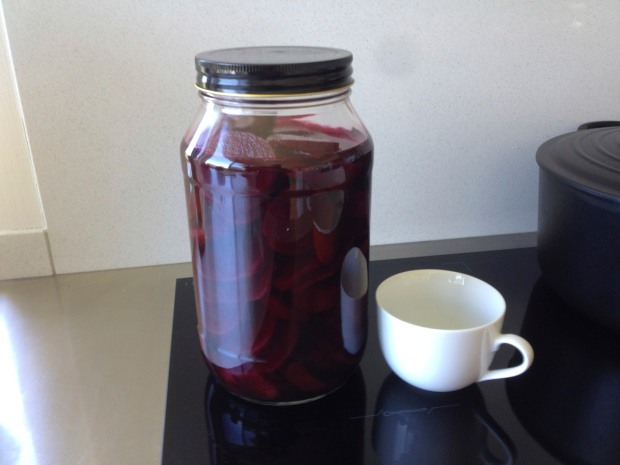


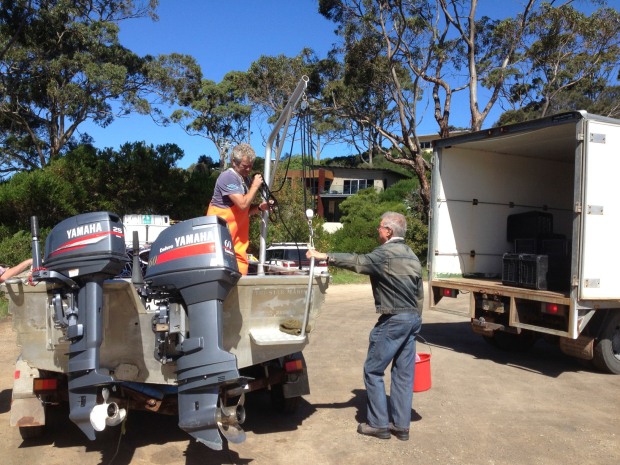




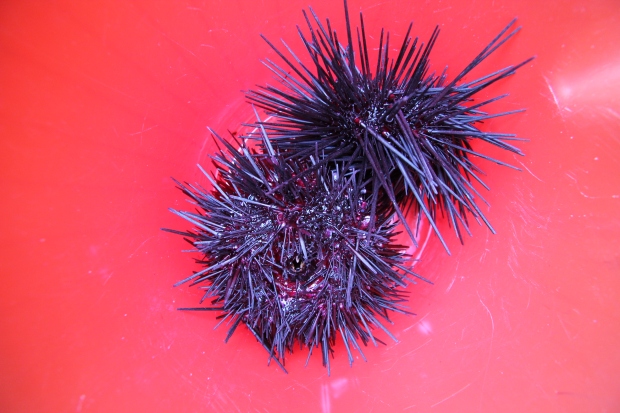
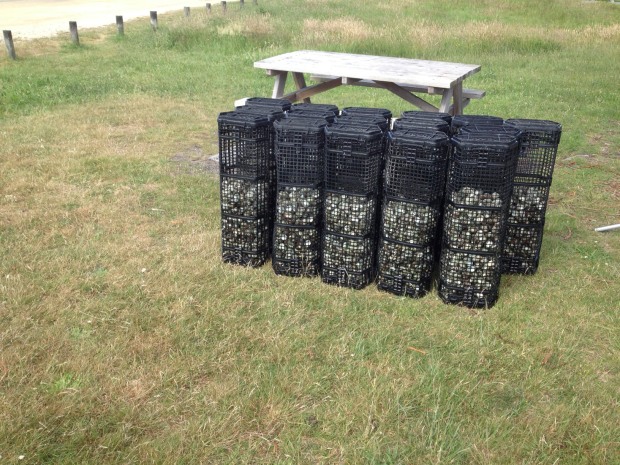








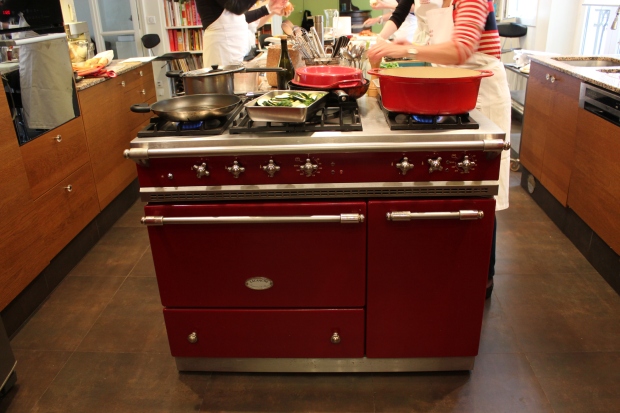




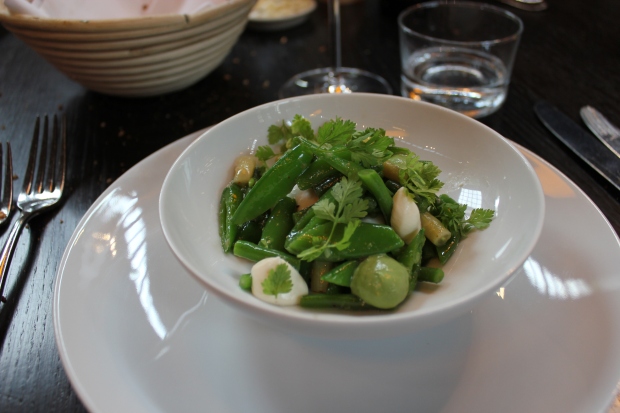

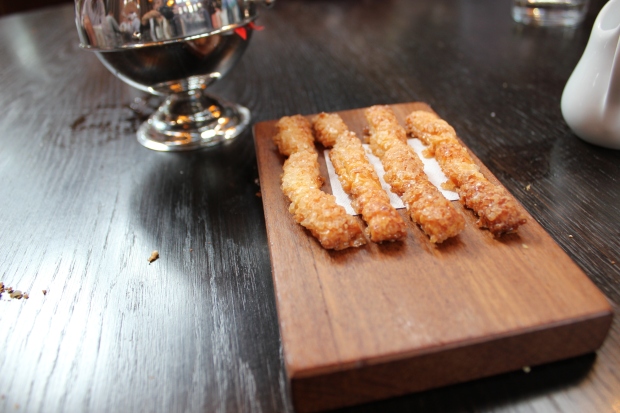








Feedback